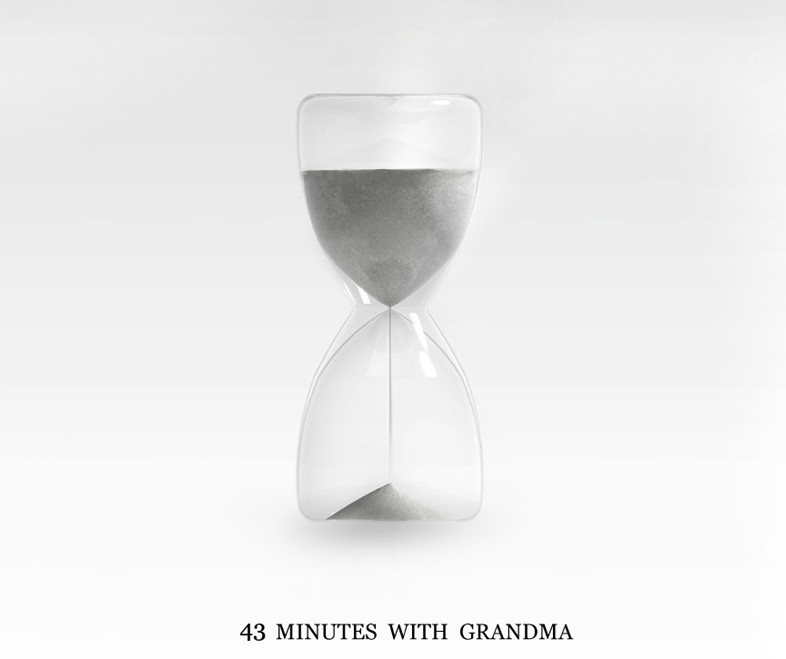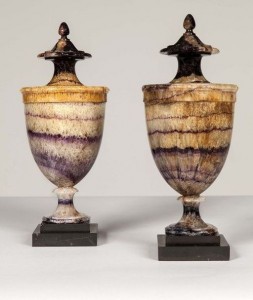Chinese designers Zijina li and Xueping Chen want to redesign the way we look at urns and cremated remains. Their design, “43 Minutes With Grandma,” was featured by Designboom’s Design for Death competition last April and makes urns much more interactive objects of the home. Their concept is simple: take the cremated remains of a loved one, and in lieu of placing them in your everyday urn, place them in an hourglass. As time goes by between you and your vesseled loved one, you will have the opportunity to reflect on their life, their death, or perhaps your own stages of grief. The point is that as they trickle from one end to the other, you can feel a sense comfort and engagement that won’t come from your traditional urn; this is a design that involves movement, truly pronouncing the loved one’s presence.
“The point is that the activity of the urn gives you more comfort than you’d ever get from a traditional urn — Li and Chen’s design truly pronounces the presence of the loved one.”
“The sand of [the] hourglass is replaced by cremation remains,” explained the Chinese designers to Designboom, “[because] the timing of the [hourglass can be] determined by the amount of remains [received from a loved one who has passed away]. I got 43 posthumous minutes from grandma,” says Zijina Li, “[and] these 43 minutes remind me of all the beautiful moments [I had with her] before [she passed].”
But what if you don’t get that much time from your Grandma? I thought after reading Li’s article, thinking of my great-grandmother’s slight frame. She’d have been a great egg-timer at best. Expecting her for an entire TV special would be pushing it.
After the death of a loved one, we already worry that we didn’t spend enough time with mom, dad, grandma, etc. Li and Chen’s design could have some confusing repercussions in that respect, as our anxiety and grief might double when we ask, “Will I get the right amount of time with my loved one in hourglass form? What is the “right” amount of time, anyways?”
“After the death of a loved one, we already worry that we didn’t spend enough time with mom, dad, grandma, etc. “
But when we move past these initial irrationalities, we see Li and Chen’s urn as a breath of fresh air in the area of end-of-life planning and cremation vessels. Too often, an urn becomes just another part of our stagnant home scenery; it’s the painting blending into the mantel or the once loaded ticking of a grandfather clock that, after years, is just white noise. We love these objects. We reflect on them from time to time– but they tend to fall from routine interaction.
“Li and Chen’s urn is a breath of fresh air in the area of end-of-life planning and cremation vessels. Too often, an urn becomes just another part of our stagnant home scenery.”
When one says “urn,” the associative words following are usually “dusty” or “antiquated,” maybe “sacred.” In short, words that scream: do not touch. Do not engage, or do so from a distance. Li and Chen are breaking free from this old-fashioned association, making the urn contemporary and inviting. They’ve inspired a marriage between two archaic objects that, once realized, brings new depth to our relationship with the cremated remains of a loved one. They’re making it, literally, something that moves.
Related SevenPonds articles:
- Design for Death: “I Wish to Be Rain” by Studio PSK
- “Family Tree” Design Integrates SMS Technology with Urns –
- Life & Death Silhouetted: Designboom’s “Portrait Urn”

 As Time Goes By: Chinese Designers Zijina Li and Xueping Chen’s “43 Minutes With Grandma”
As Time Goes By: Chinese Designers Zijina Li and Xueping Chen’s “43 Minutes With Grandma”





 John Mulaney’s “Funeral Planning” on Netflix: No Real Plan
John Mulaney’s “Funeral Planning” on Netflix: No Real Plan

 Composting Bodies Is Now Legal in a Dozen States
Composting Bodies Is Now Legal in a Dozen States














